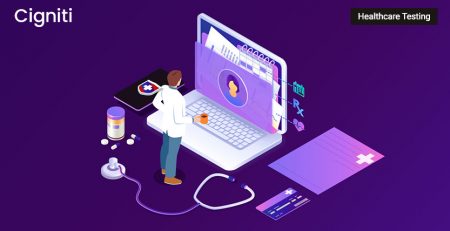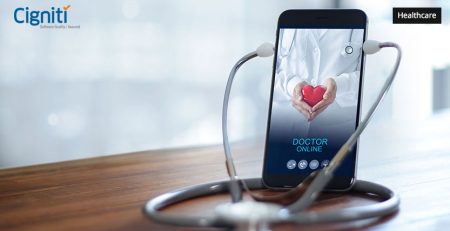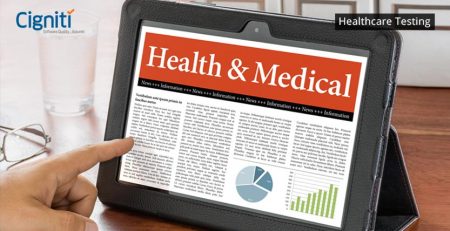Great UX is an Unconditional Need For mHealth Success
There is a severe shortage of physicans and healthcare practitioners across the globe. In the United States alone, this shortage could reach up to 120,000 physicians by 2030. The patient to doctor ratio is extremely worrisome with only 40 doctors per 100,000 patients in rural areas and 53 physicians per 100,000 people in the urban areas at present. This alarming gap is one of the key factors that are driving healthcare industry to adopt digital ways. mHealth or digital health seems promising for bridging the gap between healthcare providers and patients by eliminating distances and enhancing accessibility.
Mobile health apps can be substantial in enabling real-time communication between the doctors, patients, and other care providers. 40% of doctors trust that mHealth applications and tools can reduce the number of on-site clinical visits, a recent report revealed. As per the same report, more than 25% of American physicians are using at least one mHealth app currently, and 93% of doctors believe that mobile apps can enhance the quality of patient health. Although popularity of mHealth tools for telemedicine is still in its nascent stage, they are widely used by millions of people for tracking health and fitness, heart rate, and sleep patterns. The prevalence of smartphones and tablets is propelling the surge of mHealth market, which is expected to generate approximately 111.1 billion by 2025 at a CAGR of around 38.26%.
Despite all the hype and projections surrounding mHealth, 98% of digital health startups bomb with poor usability as one of the main reasons. 1 in 5 products fail due to an unfriendly product experience, which stands true for mHealth products as well. Usability testing can prevent such disastrous results but getting it right can be tricky, especially in the healthcare domain where there is more apprehension than acceptance due to sensitivity of the information involved and stringent compliance regulations.
The potential of mHealth or Telehealth
“In an age where the average consumer manages nearly all aspects of life online, it’s a no-brainer that healthcare should be as convenient, accessible, and safe as online banking”, said Jonathan Linkous, CEO of American Telehealth Associations. Linkous predicted, “Who nowadays would ever use a bank that makes you come into a branch to access your money? Five years from now the question will be: Who is going to go to a doctor’s office that makes you come in every time you have the sniffles?”
mHealth tools such as Digital Health Records (DHRs) can positively impact the experience of both patients and physicians. Not only do they levitate the quality of care provided, but also improve the satisfaction levels among both healthcare professionals and patients. mHealth applications allow both parties to track valuable information. Physicians can access data regarding medical history, emergency contact information, allergies, and ongoing medications of a patient before recommending a prescription. Having an insight on the patient’s holistic health history, practitioners can gain a better understanding of their patient’s condition. Similarly, patients can keep a tab on their medical examination reports, past prescriptions, and received diagnoses. These applications support critical decision-making for both patients and care providers by streamlining data entry and facilitating smooth communication between them.
Future Health Index 2019 indicates that about 74% of patients use digital health technology and expect an improved care quality in exchange for their data, whereas 76% of healthcare professionals utilize DHRs in their hospitals/practice.
The abandonment issue of mHealth users
Even with all the encouraging statistics, saying that healthcare industry is a little apprehensive about mHealth practicality would be an understatement. Many patients, physicians and other healthcare professionals think of mHealth tools like EHRs as an “additional task to manage”. Majority of them abandon the telehealth applications after the first use citing the reasons of poor usability and unintuitive design. Due to bad UX interface, the basic purpose of establishing a continuous channel between care receivers and providers is defied.
In a survey, patients outlined ease of use and enrollment, visual appeal, mHealth literacy, inclusion of social support system, and use of personalized health information as the key traits required in an mHealth application. The surveyees revealed that if an application is too difficult to use or download, they would abandon it. Engagement and personalization are indispensable features that motivate patients to use such apps.
The McKinsey design index established a strong correlation between high design, revenues, and total returns to stakeholders (TRS). In their Business Value of Design report, McKinsey revealed that over 40% of the companies do not communicate with their end users during the development phase in spite of the fact that only 5 users can effectively capture up to 80% of all the usability issues.
Choose UX Testing over excuses for poor UX
The usability issues within an mHealth application are mostly due to bad fit between the patient needs and the service offerings. Both pre-deployment and post-deployment usability testing are vital for the application’s health and success.
Usability testing assesses and analyses a product or application for ease of use and validates whether it aligns with the overall purpose or not. In addition to simply testing the application from a design perspective, the mHealth solution providers must incorporate value proposition of the app while evaluating usability.
Before implementing the product at a larger scale, real-world feedback under simulated settings should be obtained to understand its impact in actual conditions. The employment of usability testing notably improves the chances of application’s acceptance. The healthcare usability testing approach while developing an mHealth application promotes a user-centric, value-driven design with a practical outlook.
A final word
User interface is the face of an application, which should be presentable, appealing, aesthetic, and intuitive. Due to the amount of apprehension and hesitancy among the users of healthcare IT solutions, it is all the more important to instill the qualities and features as per the users’ wants. Driving awareness and spending time in making the users familiar with the app’s design can be significant in driving success and scalability.
Cigniti offers Healthcare and LifeSciences software testing solutions for diverse lifescience and healthcare players such as hospitals, pharmaceutical companies, healthcare services, clinical labs, diagnostic centers, third-party administrators (TPA), payers, medical equipment manufacturers, healthcare ISVs, and research organizations. With our healthcare application testing experience, you can add customer centricity and agility to your assurance approach for improved customer satisfaction and increased business. Connect with us to build applications that offer the much-needed high performance healthcare user experience.





Leave a Reply